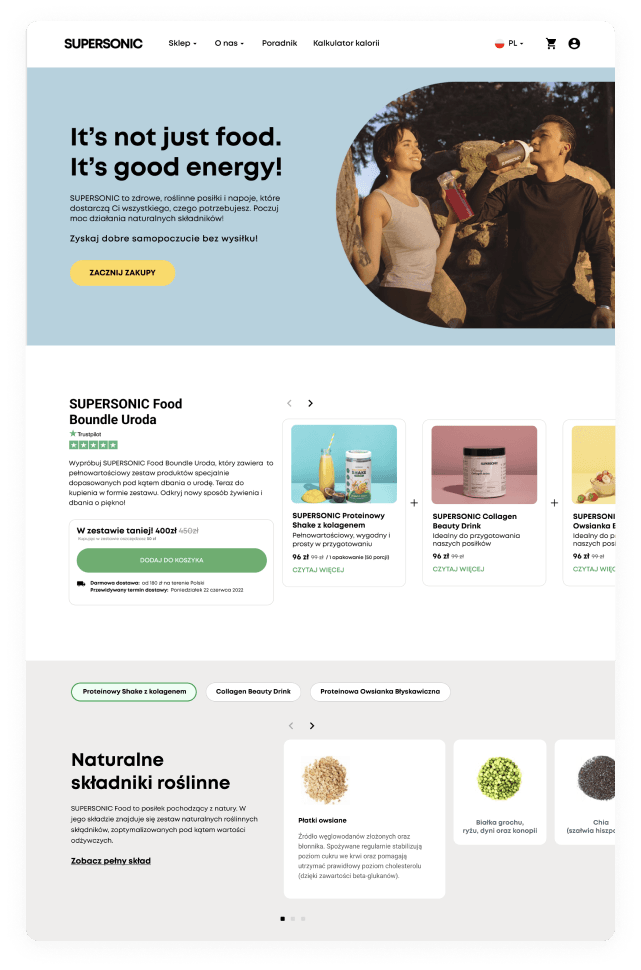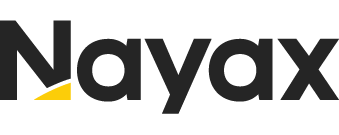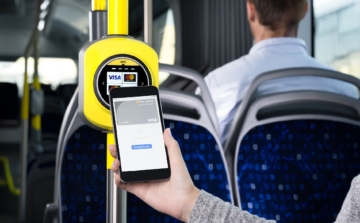

Usability testing – websites, e-commerce and applications
The Usability testing service allows you to identify problems that make it difficult for users to use your website, thus limiting conversion. Usability testing helps to tailor the interface to the preferences of the target audience, increasing user satisfaction and ultimately impacting the growth of your online business.

What is usability test?
Usability testing involves conducting tests that aim to evaluate the usability and ease of use of a website, mobile application, or other user interface. As part of this test, a group of users representing the target audience performs specific tasks on the product. During the test, observers monitor user interactions, collecting data on their experiences, difficulties, errors, and overall satisfaction with the product.
User problem detection
Usability testing allows for the identification of issues that users may encounter while using a product. This enables the implementation of appropriate fixes and improvements to ensure a better user experience.
Improving usability
Usability testing allows for the evaluation of how easily users can use a product. This helps identify areas that need improvement and adjust the user interface to be more intuitive and user-friendly.
Process optimization
Usability testing allows for the identification of problematic stages in the product usage process. This enables the implementation of changes that will streamline these processes and reduce the time required for users to complete specific tasks.
Increasing user engagement
Usability testing allows for a better understanding of users’ needs and expectations. This enables the customization of the product to their preferences, which in turn increases user engagement and satisfaction.
Increasing competitiveness
Improving usability and tailoring the product to user needs contributes to increasing competitiveness in the market. Products that are easier to use and more user-friendly a greater chance of gaining loyal customers and achieving success.

Supersonic Food – Food of the Future. Health food store.

Our cooperation with SUPERSONIC Food began with store optimization, and after a few months it turned into full maintenance of the e-commerce website. Thanks to our cooperation with SUPERSONIC Food, we managed to achieve results that resulted in increased sales and improved website use (User Experience).
I recommend cooperation with Codeq to everyone looking for a dedicated e-commerce partner. Their holistic approach to e-commerce development, maintenance and security was crucial to the success of our online store.
Chris Kozak Founder @ SuperSonic FoodTypes of usability tests and testing methods
There are several types of usability tests and testing methods that can be used to evaluate the usability of a product or system. Some common types include:
- Exploratory Testing: This involves exploring the product or system without any specific test cases or scripts, focusing on understanding its functionality and identifying potential usability issues.
- Comparative Testing: This type of testing involves comparing the usability of multiple products or systems to determine which one performs better in terms of user experience.
- A/B Testing: This method involves comparing two or more versions of a product or system to determine which one provides a better user experience. Users are randomly assigned to different versions and their interactions are analyzed to identify the most effective design.
- Remote Testing: This type of testing allows users to participate in usability tests remotely, without being physically present in a lab or testing facility. It can be conducted through online platforms or using specialized software.
- Guerrilla Testing: This method involves conducting quick and informal usability tests in public places, such as coffee shops or parks. It is a cost-effective way to gather feedback from real users in a natural environment.
- Eye Tracking: This testing method involves using specialized equipment to track and record the eye movements of users as they interact with a product or system. It provides insights into where users focus their attention and can help identify areas of improvement.
- Think-Aloud Testing: In this method, users are asked to verbalize their thoughts and actions as they navigate through a product or system. It provides valuable insights into their decision-making process and helps identify usability issues.
- Surveys and Questionnaires: These methods involve collecting feedback from users through structured questionnaires or surveys. They can be used to gather quantitative data on user satisfaction, ease of use, and other usability metrics.
These are just a few examples of usability testing methods. The choice of method depends on factors such as the goals of the test, available resources, and target audience.
Benefits of usability testing
Usability testing has several benefits, including:
1. Identifying usability issues: Usability testing helps uncover any usability problems or issues that users may encounter while interacting with a product or system. This allows for early detection and resolution of these issues, leading to a more user-friendly and efficient design.
2. Improving user satisfaction: By conducting usability testing, you can gather feedback from real users and understand their needs, preferences, and pain points. This insight helps in making design improvements that enhance user satisfaction and overall user experience.
3. Enhancing product usability: Usability testing provides valuable insights into how users interact with a product or system. This information can be used to optimize the design, layout, and functionality, making the product more intuitive, easy to use, and efficient.
4. Saving time and resources: By identifying usability issues early on through testing, you can avoid costly redesigns or rework later in the development process. This saves time, effort, and resources that would otherwise be spent on fixing usability problems after the product is launched.
5. Increasing conversion rates: Usability testing helps identify any barriers or obstacles that may prevent users from completing desired actions, such as making a purchase or filling out a form. By addressing these issues, you can improve conversion rates and achieve better business outcomes.
Overall, usability testing is crucial for creating user-centered designs, improving user satisfaction, and ensuring the success of a product or system.
Usability testing services by Codeq
Website Usability Testing
Website usability testing involves evaluating the usability and user experience of a website. It focuses on assessing factors such as navigation, layout, content organization, responsiveness, overall ease of use. Testers may be asked to perform specific tasks on the website while their interactions and feedback are observed and recorded. The goal is to identify any usability issues and make improvements to enhance the website’s usability and user satisfaction.
E-commerce Usability Testing
E-commerce usability testing specifically focuses on evaluating the usability of an online shopping platform or website. It involves testing the entire user journey, from browsing products to making a purchase and completing the checkout process. Testers are asked to perform tasks such as searching for products, adding items to the cart, and making a payment. The objective is to identify any usability issues that may hinder the shopping experience and optimize the e-commerce platform for better user engagement and conversion rates.
Application Usability Testing
Application usability testing involves evaluating the usability of a software application, whether it’s a mobile app or a desktop application. Testers are asked to perform specific tasks within the application while their interactions and feedback are observed and recorded. The focus is on assessing factors such as ease of navigation, clarity of instructions, responsiveness, and overall user experience. The goal is to identify any usability issues and make improvements to enhance the application’s usability and user satisfaction.
Digital Product Usability Testing
Digital product usability testing encompasses testing the usability of various digital products, such as software, websites, mobile apps, or any other digital interface. It involves evaluating the user experience and interaction design of the product. Testers are asked to perform tasks and provide feedback on their experience, focusing on factors such as ease of use, intuitiveness, efficiency, and overall satisfaction. The objective is to identify any usability issues and make improvements to create a more user-friendly and engaging digital product.
User testing – websites, e-commerce and applications
User testing is a process of evaluating the usability and functionality of websites, e-commerce platforms, and applications. It involves observing real users as they interact with the product to identify any issues or areas for improvement. User testing helps to ensure that the product meets the needs and expectations of its intended users. It can be conducted through various methods such as interviews, surveys, and usability tests. The insights gained from user testing can be used to make informed design decisions and enhance the overall user experience.
Effective usability testing
Effective usability testing involves careful planning and execution to ensure accurate and valuable insights. Here are some key considerations for conducting effective usability testing:
1. Define clear objectives: Clearly define the goals and objectives of the usability testing. What specific aspects of the website, e-commerce platform, or application do you want to evaluate? This will help guide the testing process and ensure focused results.
2. Identify target users: Determine the target audience for your product and recruit participants who represent this user group. Consider factors like demographics, experience level, and familiarity with similar products.
3. Create realistic scenarios: Develop realistic scenarios or tasks that reflect how users would typically interact with the product. These scenarios should be specific and measurable, allowing you to observe users’ actions and gather relevant data.
4. Choose the right testing method: Select the appropriate testing method based on your objectives and resources. Common methods include moderated testing (where a facilitator guides participants through the tasks) and unmoderated testing (where participants complete tasks independently).
5. Prepare a test environment: Set up a controlled testing environment that closely resembles the users’ typical context of use. Ensure that the necessary equipment and software are in place and functioning properly.
6. Observe and collect data: During the testing session, observe participants as they complete the tasks and take note of their actions, feedback, and any difficulties they encounter. Use a combination of qualitative and quantitative data collection methods, such as think-aloud protocols, questionnaires, and task completion rates.
7. Analyze and interpret the results: Analyze the collected data to identify patterns, trends, and areas for improvement. Look for common usability issues, user preferences, and any unexpected findings. Use this information to inform design decisions and prioritize enhancements.
8. Iterate and improve: Use the insights gained from usability testing to make iterative improvements to the product. Implement changes based on user feedback and retest to validate the effectiveness of the modifications.
Remember, effective usability testing is an ongoing process that should be integrated throughout the development lifecycle to continuously enhance the user experience.
UX testing – all you need to know
UX testing, also known as user experience testing, is a crucial stage of the design process any product or service. It involves evaluating the usability and overall user experience of a digital product, such as a website or mobile app, by gathering feedback from real users.
The main goal of UX testing is to identify any usability issues or pain points that users may encounter while interacting with the product. This feedback helps designers and developers make informed decisions to improve the user experience and ensure that the product meets the needs and expectations of its target audience.
There are several methods and techniques used in UX testing, including:
1. Usability Testing: This involves observing users as they perform specific tasks on the product and collecting feedback on their experience. It can be done in a controlled lab environment or remotely.
2. Interviews: Conducting interviews with users to gather their thoughts, opinions, and suggestions about the product.
3. Surveys and Questionnaires: Using surveys or questionnaires to collect quantitative and qualitative data about the user experience.
4. A/B Testing: Comparing two or more versions of a product to determine which one performs better in terms of user experience and achieving specific goals.
5. Eye Tracking: Using specialized equipment to track and analyze where users are looking on the screen, providing insights into their attention and behavior.
6. Card Sorting: Asking users to organize content or features into categories to understand how they mentally structure information.
7. Prototype Testing: Testing early versions of a product’s design or functionality to gather feedback and make improvements before the final release.
The results of UX testing can be used to make data-driven decisions and prioritize design changes or improvements. It helps ensure that the product is intuitive, user-friendly, and meets the needs of its target audience.
Overall, UX testing is a valuable tool in the design process, helping to create products that provide a positive and enjoyable user experience.
Trust our workflow
Great information architecture and comfortable navigation help users achieve their goals on your website. Build a website with us.
Discovery
During the discovery phase, we collect all the necessary data that allows us to make informed decisions in the following stages of the project. It helps us co-create a clear roadmap and product backlog (not sure what you mean by backlog here, maybe replace this with strategy).
Design
The UX and design phase consist of visualizing a previously developed concept. We recreate the information architecture and actualise your business goals through UX. Finally, the digital product comes to life with a specific visual style that aligns with your brand identity.
Development
Using the right tools and tech stack, everything from discovery and design is transformed into the language of technology. Every solution is complemented by extensive testing from a wide range of devices.
Support
The implementation of a digital product is only the beginning of the adventure. We offer support with maintenance and further development and are continuously present for our clients. Equipped with analytical data, we can create hypotheses and conduct A / B tests.
They trusted us
I recommend cooperation with Codeq to everyone looking for a dedicated e-commerce partner. Their holistic approach to e-commerce development, maintenance and security was crucial to the success of our online store.
The tools we use in our work
Benefits of collaborating with Codeq
A 12 month warranty
The quality of work is not only empty promises. The warranty will give you assurance that our solution will be free from defects.
An experienced and well-coordinated project team
We employ the best WordPress and Shopify Developers in Poland with many years of commercial experience. We provide the highest quality of code and ongoing communication.
Efficient communication and project management
The refined and tested project management process and the continuous care of the Project Manager guarantee uninterrupted access to the status of our projects.
Technological polyglots
There are many specialists of various technologies on board our team. Thanks to them we are able to be your eyes and ears in the constantly changing world of technology.
Let’s discuss your idea!
Free consultation with an expert – maximum focus on your idea
An analysis of challenges and issues in the field of UX Design and Development
Recommendations for best practices in UX Design and Development
A comprehensive implementation plan from start to finish











